Black Tailed Skimmer is a medium dragonfly which can be seen from mid-May through to September. Yellowish in colour with a ladder pattern along the body, the males take on a blue/grey pruinescence when mature. The females remaining yellowish. Normally seen resting on a surface such as a fishing platform or on open soil, rather than perched on vegetation, though not always. Found at still and slow moving waters
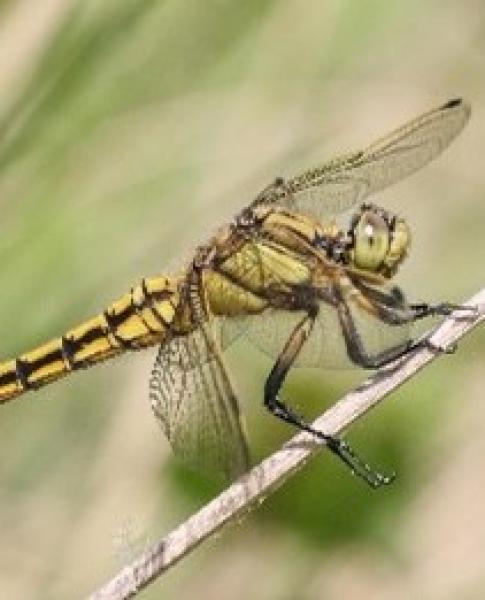
Often the earliest Dragonfly to emerge each year, the Broad Bodied Chaser can be seen in early May. Again, males take on a blue/grey appearance once matured, they body is wider and flatter than most other dragonflies, hence the common name. Often found perched on sticks and reeds at still and slow moving water.
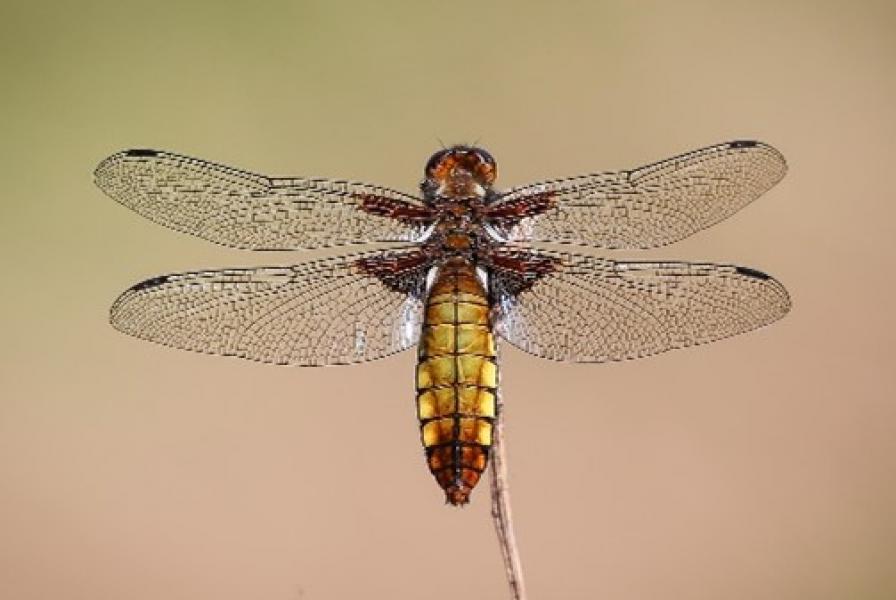
The Brown Hawker is a large dragonfly with easily identifiable brown or orange wings and a brown body. Usually seen in flight, hawking for prey over still or slow moving water from June through to October

As indicated by the common name, the Common Darter is widespread in the area. One of the smaller dragonflies, males are a bright orangey red, females being more yellow, then maturing towards a more grey colour. Similar to Ruddy Darters, the Common Darter has a yellow stripe down each leg, where the Ruddy has all black legs. Found on still or slow moving waters, perching may be in surfaces or on sticks, depending on conditions. Found from late June through to as late as late November if weather conditions are favourable – often the last dragons to be found of the year – though not always…
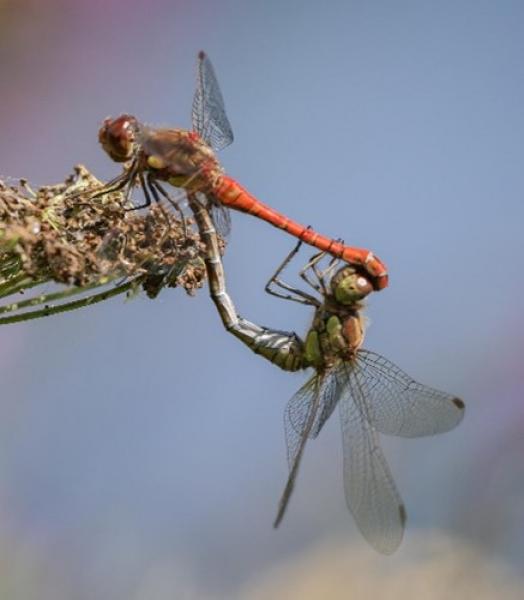
The Emperor Dragonfly aka the boss dragonfly. They can be seen flying up and down over the water from June until the end of Summer. Males are green with a blue tail; females more green and brown. They can be easily identified even in flight as the tail droops down from the body slightly.
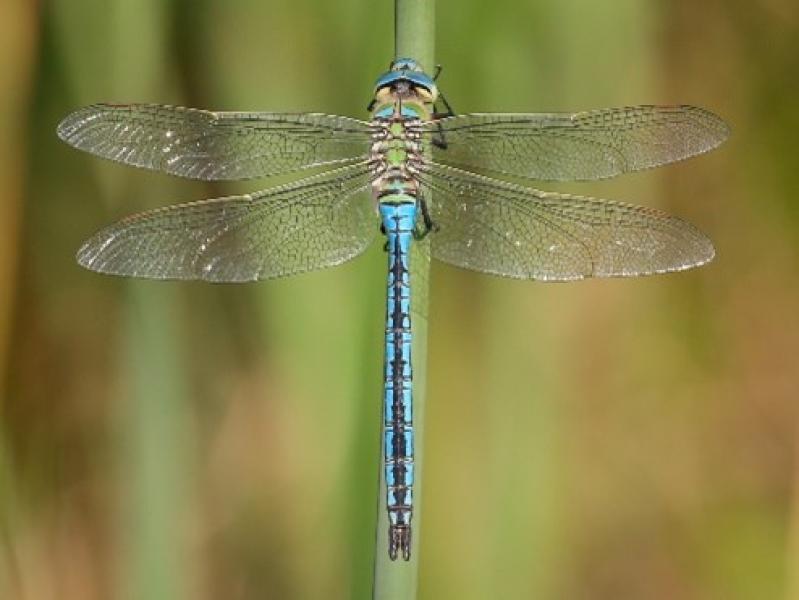
Another early dragonfly with first emergences taking place early to mid-May the Four Spotted Chaser is easily identified by the four ‘extra’ spots on the wings. These stunning creatures often perch on top of sticks and branches, giving a clear view of their beautiful markings.
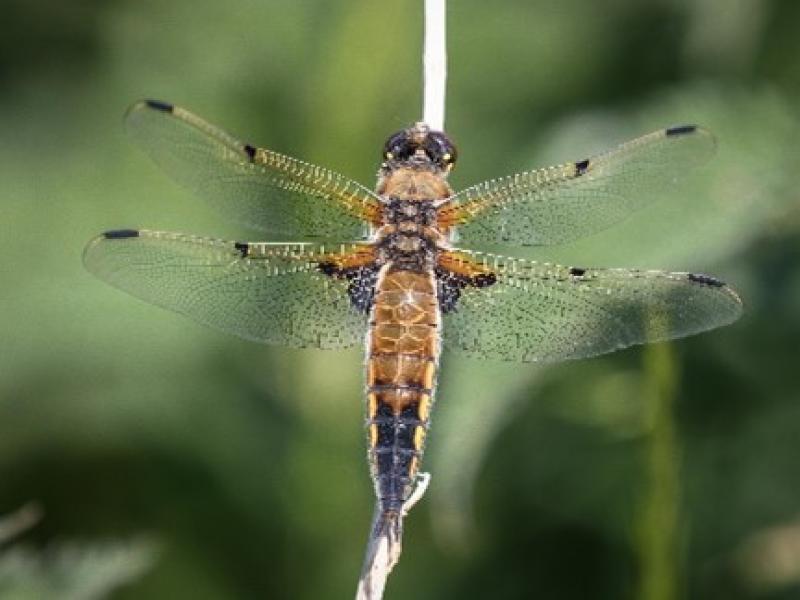
Probably the rarest species in the whole list, in this area. The Hairy Dragonfly, or Hairy Hawker, is usually found at still waters in the east of the region. Recent sightings show that it is spreading further into the area, though any seen at the river are likely to have strayed from a neighbouring pond. There is every chance they could soon spread to Collett’s wood. This hawker is an early starter, with their seasons running from early May to the end of June.
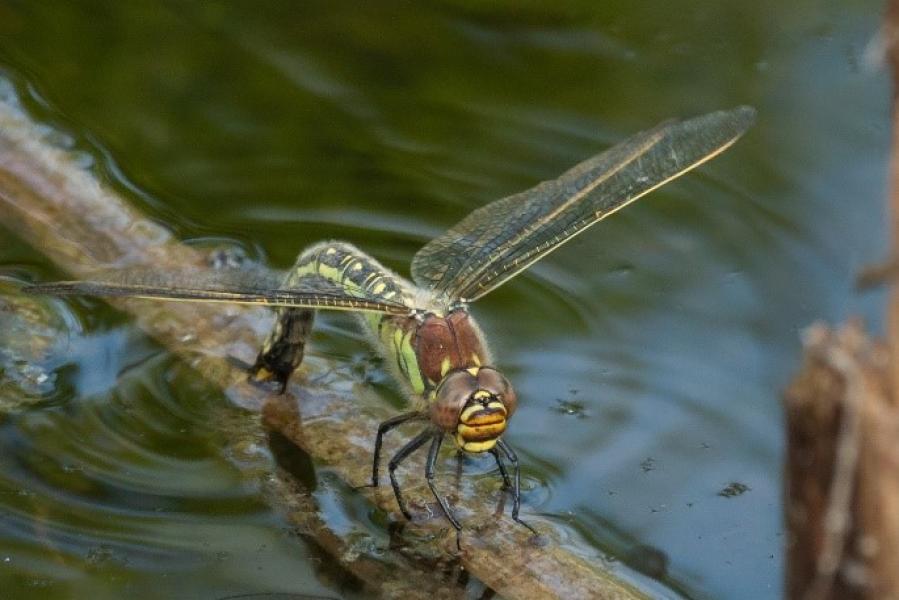
A common sight in the late summer and autumn, the Migrant Hawker is another large dragonfly. Males are patterned with blue, whereas the females are duller with a more yellow mottling. Often seen flying up and down the water looking for food, but can also be found perched, hanging in foliage of undergrowth, resting in a warm spot
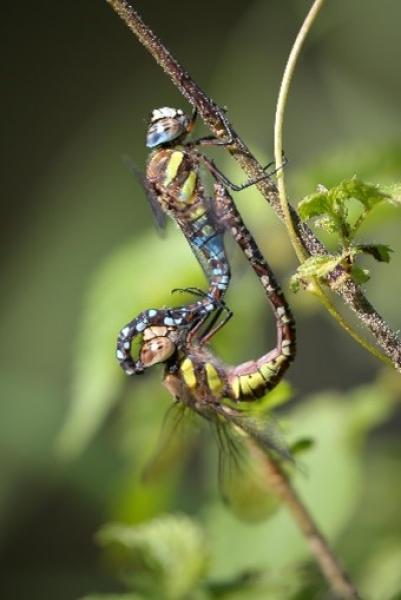
Less common that the Common Darter, the Ruddy Darter is another small dragonfly. Males are a rich scarlet, females are more yellow. The legs are all black which differentiates them from the Common Darter, though close inspection is needed to confirm which is which. On the wing from late June through to early Autumn at slow moving or still water
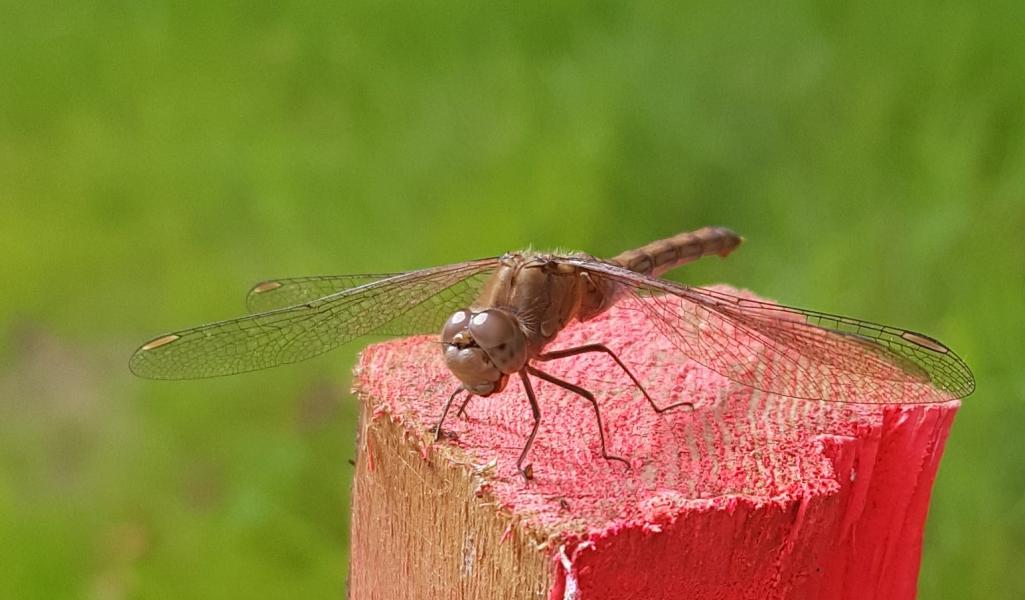
A fairly recent success story; the Scarce Chaser is becoming poorly named, as numbers along the Avon are increasing steadily and their reach no extending towards Warwick, whereas only ten years ago they were an uncommon sight on the Avon at all. Newly emerged individuals show stunning oranges and details in the wings, with colours dulling as both sexes mature. Male exhibit a grey/white pruinescence when mature and females take on a blues grey tone. On the wing from late May to the end of July, with a few showing into August when conditions have favoured. As with the other Chasers, they are prone to perching in the open on sticks and stems
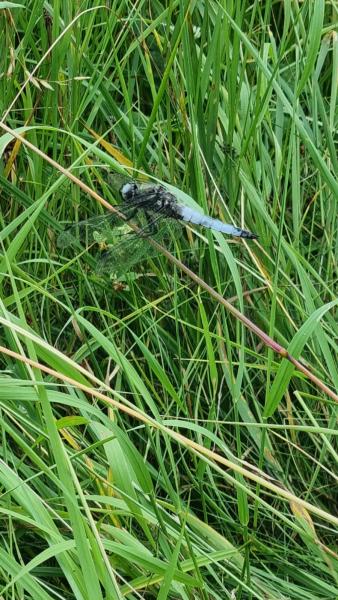
Another large dragonfly, the Southern Hawker resembles the Migrant Hawker in many ways, though it is a little larger. The tell take give away feature is the presence of two large blobs on the thorax behind the head, like a pair of headlights. As with the other large dragonflies they can be seen flying up and down looking for food, of when found resting if you are lucky and/or very careful. As seemingly inquisitive species, they often fly around people and inspect them. On the wing from late June to October, even sometimes November.
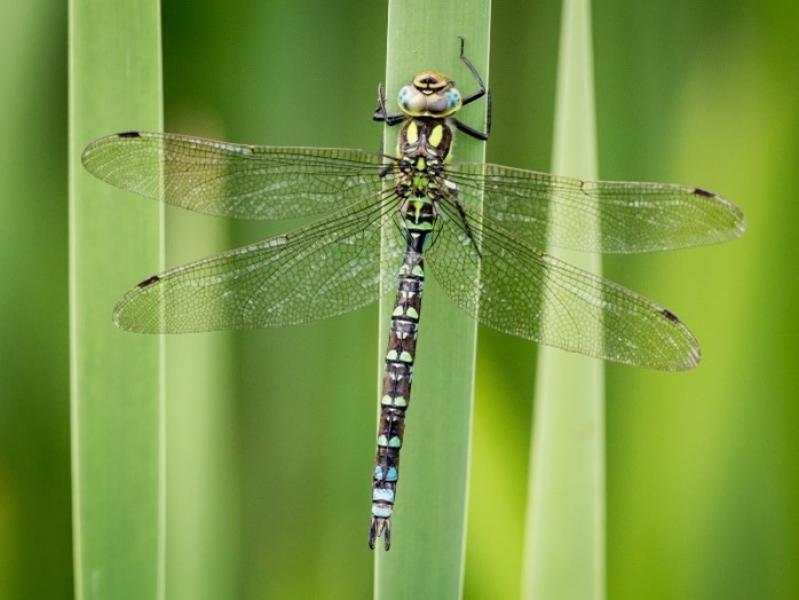
Photo credits to Mike Schilling.



